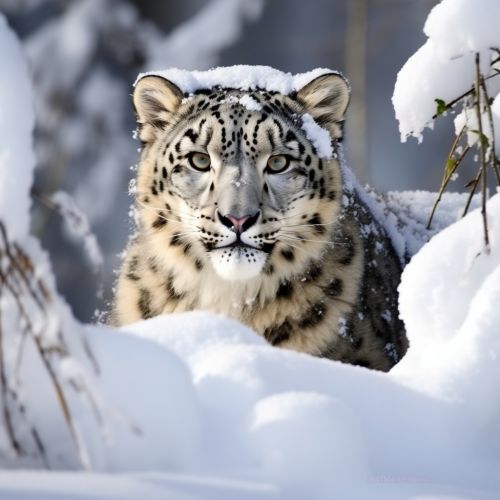The Biological Mechanisms of Animal Adaptation to Extreme Environments
Introduction
The biological mechanisms of animal adaptation to extreme environments encompass a wide range of physiological, biochemical, and behavioral changes that allow organisms to survive and reproduce under conditions that are lethal to most life forms. These adaptations are the result of evolutionary processes over many generations and are often specific to the particular challenges posed by the environment.


Physiological Adaptations
Physiological adaptations are changes in an animal's internal body functions that enable it to cope with extreme environmental conditions. These can include modifications in the animal's metabolic processes, water conservation mechanisms, and thermoregulation abilities.
Metabolic Adaptations
Many animals living in extreme environments have evolved metabolic adaptations to cope with limited food resources or extreme temperatures. For example, some desert animals have developed the ability to metabolically produce water from the oxidation of fat, reducing their dependence on external water sources. Similarly, animals living in extremely cold environments, such as the Arctic, often have a higher basal metabolic rate to generate more body heat and maintain their core body temperature.


Water Conservation
Water conservation is crucial for animals living in arid environments, such as deserts. These animals have evolved a variety of mechanisms to minimize water loss, including highly efficient kidneys that can concentrate urine and reduce water loss, and the ability to reabsorb water from feces in the large intestine.
Thermoregulation
Thermoregulation is a critical physiological adaptation for animals living in extreme temperatures. Animals in cold environments, such as polar bears, have evolved mechanisms like a thick layer of insulating fur and a high-fat diet to maintain body heat. Conversely, animals in hot environments, like desert lizards, regulate their body temperature through behavioral adaptations like basking in the sun during the cooler morning hours and seeking shade during the hottest part of the day.
Biochemical Adaptations
Biochemical adaptations involve changes at the molecular level, including alterations in the structure and function of proteins and other macromolecules, to enable survival in extreme environments.
Protein Structure and Function
Proteins in organisms adapted to extreme environments often have unique structural features that enable them to function under these conditions. For example, animals living in extremely cold environments often have 'cold-adapted' enzymes that can function at low temperatures, while those in hot environments have 'heat-stable' enzymes that retain their function even at high temperatures.


Membrane Fluidity
The fluidity of cell membranes is crucial for maintaining cell function, and it can be affected by temperature. Animals living in cold environments often have cell membranes with a high proportion of unsaturated fatty acids, which prevent the membranes from becoming too rigid in low temperatures. Conversely, animals in hot environments often have membranes with more saturated fatty acids, which help maintain membrane fluidity at high temperatures.
Behavioral Adaptations
Behavioral adaptations are changes in an animal's behavior that increase its chances of survival in an extreme environment. These can include changes in feeding habits, mating behaviors, and patterns of activity.
Feeding Habits
Animals living in extreme environments often have specialized feeding habits to cope with limited food resources. For example, desert animals may be nocturnal, feeding at night when temperatures are cooler and water loss is minimized.


Mating Behaviors
Mating behaviors can also be adapted to extreme environments. For example, some animals living in cold environments may delay reproduction until the warmer months when food resources are more abundant.
Activity Patterns
Activity patterns, such as being nocturnal or diurnal, can also be adaptations to extreme environments. For example, many desert animals are nocturnal, being active at night when temperatures are cooler.
Conclusion
The biological mechanisms of animal adaptation to extreme environments are diverse and complex, involving a combination of physiological, biochemical, and behavioral changes. These adaptations are the result of evolutionary processes and are key to the survival of these animals in their respective environments.


